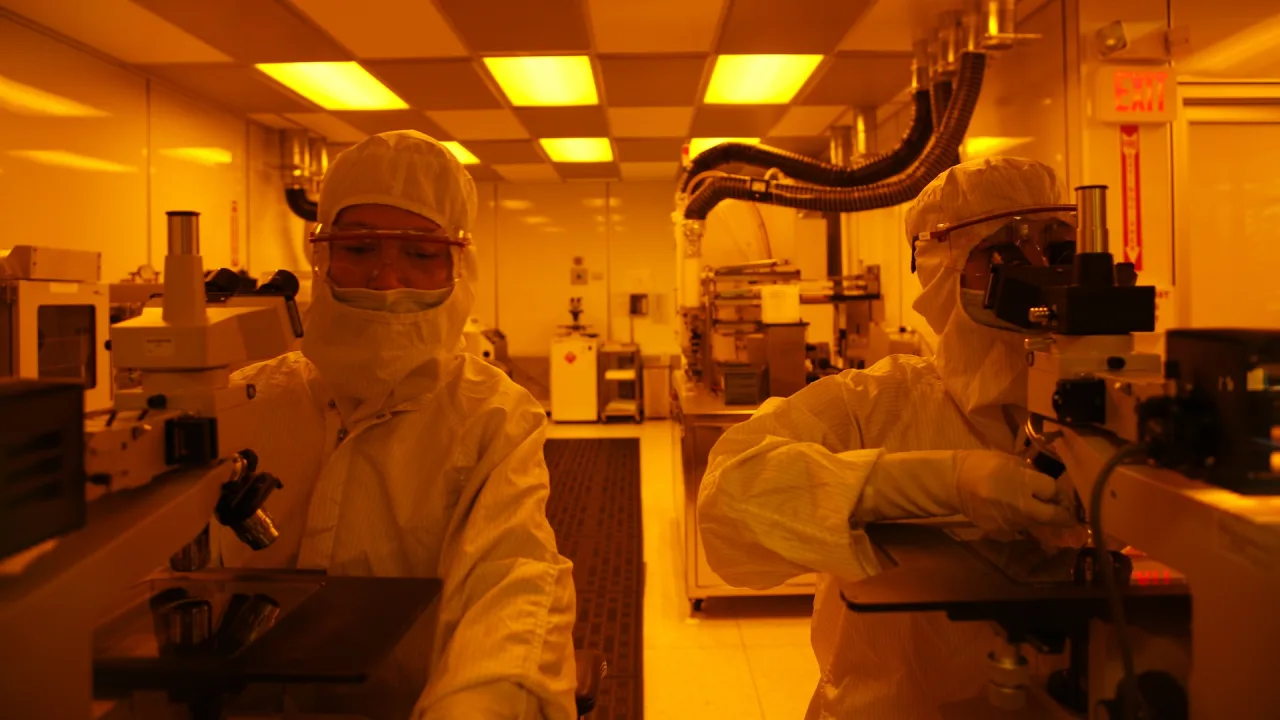Seeing the light
Electronic display screens in every size and form—including those used in smartphones, computer monitors, tablets, and televisions—have become a dominant mode of interfacing with the world. In this current environment, two factors have become especially important: power usage and image quality. Universal Display Corporation (UDC), a leading inventor and developer of organic light-emitting diode (OLED) technologies and materials, has been busy innovating in both these areas. Since 2015, energy-savings from their materials used in OLED smartphone displays have helped reduce power consumption in those screens by 68%. And its goal of delivering high-performance and eco-friendly display experiences (to both consumers and professionals) has spurred UDC’s more than 6,000 OLED-related patents, which include advancements that have helped enable OLED screens to be foldable, roll-able, thinner, and more durable. Today, UDC’s technology is part of virtually every consumer OLED display worldwide. “From the very beginning, we wanted to invent cool, interesting things that had tremendous commercial potential,” says Steven Abramson, UDC president and CEO. “It’s what I call ‘hippie capitalism.’ You need to make money, which gets you to aspire to the next level. The ‘hippie’ part is that you have mutual respect for everybody and understand that everybody can have an idea.” Its commitment to collective problem-solving continues to push the boundaries for what is possible in electronic display technology—and has earned UDC a spot on Fast Company’s list of the Best Workplaces for Innovators for 2024. SEEKING OUT DIVERSE PERSPECTIVES The fundamental principle behind OLED technology is simple: certain carbon-based materials emit light when stimulated by an electric current. The exceedingly complex challenge is continuously developing ever-advancing materials to produce sharp and color-accurate high-definition images while reducing energy consumption in displays. Central to the New Jersey–based company’s innovation is its culture. UDC places great value in the diverse perspectives of every employee—more than 25 countries are represented across its global operations. To spur collaboration, its scientists and engineers will share offices with colleagues in different fields and meet at the barista bar or cafeteria—free coffee and meals are employee perks—at UDC’s Ewing, New Jersey Collaboration Center. “People from different technical, educational, and personal backgrounds bring different ideas to the table,” Abramson says. “And very often, invention occurs in their interactions.” New commercial concepts developed internally must undergo a rigorous process of conceptualizing, testing, learning, and reconceptualizing. “It’s a grind,” Abramson says, “moving forward, step by step, making mistakes, learning from those mistakes, making some more mistakes, having some successes, and continuing to innovate.” THE NEXT LEAP IN DISPLAY TECHNOLOGY An exciting technological frontier UDC is exploring is called “plasmonic PHOLED,” a proprietary R&D innovation that promises to dramatically increase device efficiency and operating life. While current OLED technology emits light that often gets trapped within a device, plasmonic PHOLED redirects energy so that light goes to where it is needed. This way, Abramson says, “Light gets out the front door.” The development of plasmonic PHOLED is one of many examples of how UDC is advancing energy-efficient technology to support the displays of the future through its commitment to fostering collaboration and creativity in the workplace. “The object is to create a sustainable, innovative company for our children and grandchildren to make their lives better,” Abramson says.

Electronic display screens in every size and form—including those used in smartphones, computer monitors, tablets, and televisions—have become a dominant mode of interfacing with the world. In this current environment, two factors have become especially important: power usage and image quality.
Universal Display Corporation (UDC), a leading inventor and developer of organic light-emitting diode (OLED) technologies and materials, has been busy innovating in both these areas. Since 2015, energy-savings from their materials used in OLED smartphone displays have helped reduce power consumption in those screens by 68%. And its goal of delivering high-performance and eco-friendly display experiences (to both consumers and professionals) has spurred UDC’s more than 6,000 OLED-related patents, which include advancements that have helped enable OLED screens to be foldable, roll-able, thinner, and more durable. Today, UDC’s technology is part of virtually every consumer OLED display worldwide.

“From the very beginning, we wanted to invent cool, interesting things that had tremendous commercial potential,” says Steven Abramson, UDC president and CEO. “It’s what I call ‘hippie capitalism.’ You need to make money, which gets you to aspire to the next level. The ‘hippie’ part is that you have mutual respect for everybody and understand that everybody can have an idea.”
Its commitment to collective problem-solving continues to push the boundaries for what is possible in electronic display technology—and has earned UDC a spot on Fast Company’s list of the Best Workplaces for Innovators for 2024.
SEEKING OUT DIVERSE PERSPECTIVES
The fundamental principle behind OLED technology is simple: certain carbon-based materials emit light when stimulated by an electric current. The exceedingly complex challenge is continuously developing ever-advancing materials to produce sharp and color-accurate high-definition images while reducing energy consumption in displays.
Central to the New Jersey–based company’s innovation is its culture. UDC places great value in the diverse perspectives of every employee—more than 25 countries are represented across its global operations. To spur collaboration, its scientists and engineers will share offices with colleagues in different fields and meet at the barista bar or cafeteria—free coffee and meals are employee perks—at UDC’s Ewing, New Jersey Collaboration Center. “People from different technical, educational, and personal backgrounds bring different ideas to the table,” Abramson says. “And very often, invention occurs in their interactions.”
New commercial concepts developed internally must undergo a rigorous process of conceptualizing, testing, learning, and reconceptualizing. “It’s a grind,” Abramson says, “moving forward, step by step, making mistakes, learning from those mistakes, making some more mistakes, having some successes, and continuing to innovate.”
THE NEXT LEAP IN DISPLAY TECHNOLOGY
An exciting technological frontier UDC is exploring is called “plasmonic PHOLED,” a proprietary R&D innovation that promises to dramatically increase device efficiency and operating life. While current OLED technology emits light that often gets trapped within a device, plasmonic PHOLED redirects energy so that light goes to where it is needed. This way, Abramson says, “Light gets out the front door.”
The development of plasmonic PHOLED is one of many examples of how UDC is advancing energy-efficient technology to support the displays of the future through its commitment to fostering collaboration and creativity in the workplace. “The object is to create a sustainable, innovative company for our children and grandchildren to make their lives better,” Abramson says.






















